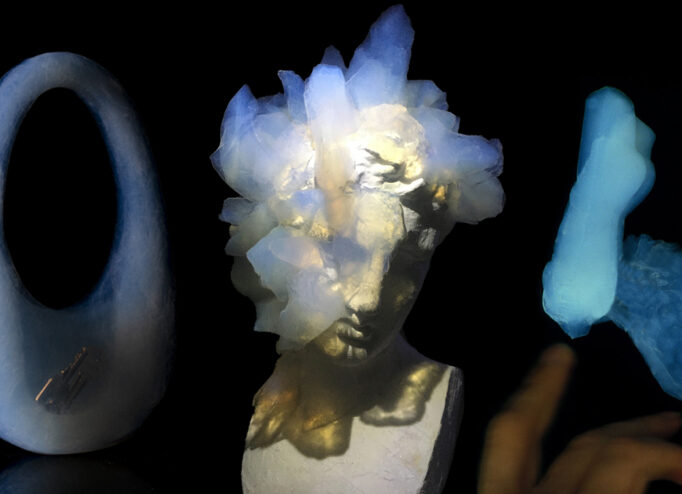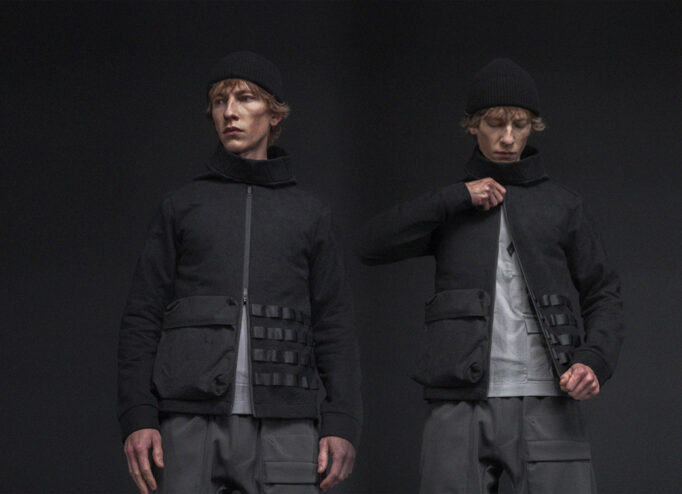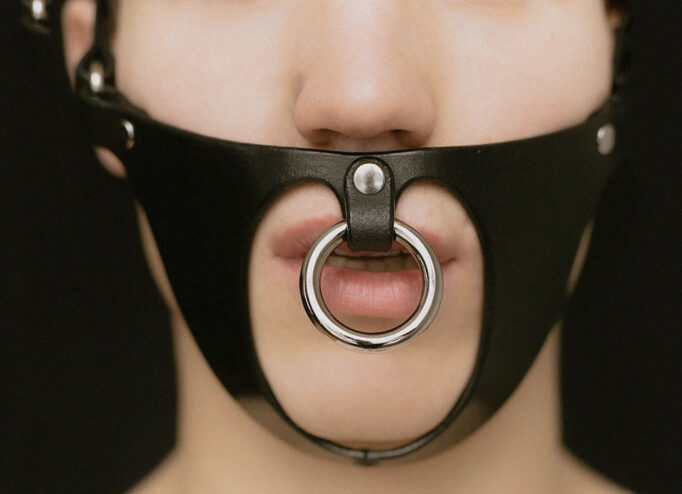After 20 years, BE@RBRICK has become a pop culture phenomenon. Limited editions that are never re-released, numerous collaborations with almost all key brands, companies and artists, and as a consequence — fans and collectors all over the world who are ready to pay tens of thousands of dollars for a rare figure. But if earlier the feature of any collaboration was mostly just a new design of the bear figure, then in 2023 its manufacturer MEDICOM TOY for the first time presents a technological product — a portable audio speaker. It was developed by the Ukrainian company Rinaro Isodynamics.
Rinaro Isodynamics is hardly known to the masses, but has already established itself among audiophiles and premium brands. The company specializes in the design and manufacture of audio systems, and one of its most famous products is Empyrean headphones, which were created in collaboration with Romanian brand Meze Audio and which cost three thousand dollars. The specialized media, as well as Forbes and Rolling Stone wrote about them.
Pavlo Shymanovych, founder of Rinaro Isodynamics, calls the collaboration with MEDICOM TOY the most difficult project in the company’s history. They had to not only create an audio system, but to integrate it into a 28 centimeter high bear figure, while maintaining the sound quality. In an exclusive interview with DTF Magazine, Pavlo tells us how this collaboration became possible and who was the initiator, what key challenges the team solved while working on the product and why the portable speaker they created could become a new stage in the history of BE@RBRICK
— How did your collaboration with MEDICOM TOY become possible?
— In 2018, we released our flagship Empyrean headphones, which we created together with the Romanian audio brand Meze Audio. They were quite successful, the world’s specialized media wrote a lot about them, and they were warmly received by audiophiles, particularly in Japan.
There was a person in the MEDICOM TOY team who really liked our headphones and this became the basis for future collaboration. We met at an event in Tokyo, and after that we started communicating, discussing ideas, looking for a common vision and opportunities — all this lasted for quite a long time.
BE@RBRICK has created many collaborations with different brands and artists over 20 years, but they didn’t have a technological product in the classic sense. So they wanted to create something completely new, a new experience, not just another bear design. And our expertise matched their request well.

— You say: ‘Quite a long time’. Are we talking months or years?
— Years. We started communicating with MEDICOM TOY back in 2019, and the launch was planned for 2020-2021. However, there are things outside of our control that significantly affected the timeline — first there was the coronavirus pandemic, then the war started.
— The press release notes that this is the first BE@RBRICK portable speaker.
— In 2010, MEDICOM TOY had a collaboration with a Japanese company called RADIUS called the BE@RBRICK SPEAKER SYSTEM — you can still find it through collectors or people who resell it. Basically, it was a wire stand where you put your iPod, or at that time the modern fourth iPhone, and you could play music from there. But we made a fundamentally different product, a portable audio system of a completely different level of engineering, quality, sound and technology in general — so we can definitely say that this is the first BE@RBRICK portable audio speaker.
There are 214 parts in our speaker and each of them is created from scratch. It completely replicates the original shape of the bear, everything in it moves — it has bendable arms, head and torso.
We set out to fully preserve the original functionality and minimize visual changes. Therefore, there are only a few elements that visually distinguish our speaker from the standard BE@RBRICK 400% — four speakers in the head covered with acoustic meshes, a control button on the back of the belt and a USB-C socket for charging.
The key challenge was to integrate a 400% quality loudspeaker system into the existing form. It was actually a super difficult challenge both acoustically and mechanically. So this collaboration is about creating an entirely new product, not just a standard module with sound inserted into an existing form.

— What have been some of the other major challenges for you as a company that makes sound?
— Initially, there was a rather long search for an acoustic solution. In acoustics, the larger the volume, the easier it is to achieve the desired acoustic parameters and sound. In the case of the BE@RBRICK 400% acoustic volume could only be the head, which is less than a third of the total volume of the figure. It was the first and one of the biggest challenges to get quality sound in such a limited volume. And it took us almost a year just to solve this problem.
We actually designed the new speakers from scratch and they are specifically designed to work in this extremely limited acoustic volume, whereas classical designers usually do the opposite: they take an existing speaker as a basis and build an acoustic design around it to achieve the desired result and sound.
— What else makes BE@RBRICK unique? Details that are invisible to users, right?
— There are many interesting engineering solutions in this project, some of which we have patented. For example, we designed the speaker system in such a way that the sound field spreads evenly around the speaker and this allows it to move freely in space without deterioration of sound quality depending on its position, which, in turn, is extremely important for a portable audio speaker.
The center of gravity of the bear figure was significantly shifted due to the speakers placed in the head and the first samples were very unstable and could easily fall over. So we designed additional counterweights in the legs to solve this problem.


We tried to keep the control interface as simple as possible and reduced everything to a single button — you have to press it for two seconds to turn it on/off, and after a short click it goes into Bluetooth connection mode.
In addition, we implemented another non-standard engineering solution that we hope will appeal to BE@RBRICK culture connoisseurs — we used the bear’s hands to organize the control of streaming audio: one hand controls the volume, the other hand switches tracks forward/backward.
We also designed a replaceable battery to maximize the life of our audio BE@RBRICK. Because we realize that even though this figure is a speaker, it is first and foremost an art object that can have long-term collector value for its owner.

— In this collaboration, BE@RBRICK is available in three designs, one of the variants is completely clear. TThis is done on purpose to allow people to see how the speaker is designed, right? And whose idea was that?
— The idea to create a clear version came to us when the project was nearing completion. That is, at first audio BE@RBRICK was designed without the idea that all its components should be visible. But then, together with the MEDICOM TOY team, we came to the conclusion that through transparency we could illustrate all the engineering beauty and complexity of this product at the same time.
In the first release, there will be a smoke color as well as a black non-transparent design in addition to the clear one.
So I hope that this collaboration will be an event and big news, at least among BE@RBRICK connoisseurs, because it actually opens another dimension to interact with this object. It is a new page in its history, it is technological and a whole new experience for the connoisseurs of this culture.



— Did you create a completely finished product or just the acoustic part?
— We completely designed this product, but the production is done in certified factories in China under the supervision of MEDICOM TOY’s production team.
— Let’s talk about competition. You said that you’ve already established yourself in your headphone niche, which led to your collaboration with BE@RBRICK. How strong is the competition in the world of design art audio speakers? Are there any competitors to the BE@RBRICK audio speaker?
— In fact, the niche of so-called object audio is still a blue ocean. There are a few well-known companies that create products that are partly oriented towards this niche, such as Bang&Olufsen, BowerWilkins, Devialet, as well as a few smaller companies, but none of them have products that can be fully considered direct competitors to audio BE@RBRICK.
BE@RBRICK is a unique case in the world of art objects, so the BE@RBRICK audio speaker is also unique in a way.

— What is the difference between your cooperation with MEDICOM TOY and other partners?
— It is worth mentioning here the history of BE@RBRICK and why we like this project. BE@RBRICK is a different platform, a different format, and an atypical business for electronics.
In electronics, there are no truly limited releases. Usually it’s only about a version of a mass-produced product. This is because it takes a lot of time and investment to release such a product and we have experienced that. We spent several years and substantial funds on development, and when you release a limited version of such a product, you can’t get your investment back. Accordingly, companies put the product into mass production, and therefore it is impossible to create excitement and uniqueness, which help to build a hype around the product. A situation where you want to buy something, but it is not available because it was released in limited quantities.
And the fashion industry, unlike the classic audio market, uses this approach quite often, creating drops, limited collections, etc.
The fact that BE@RBRICK is a platform for different designs on the one hand allows you to have limited releases and on the other hand allows you to keep releasing the same product for 20 years.
This is a new experience for us, and I hope that BE@RBRICK audio can open up a new niche, particularly in the object audio market. We’ll see what comes out of it. We are very optimistic.


— What do you think about when you look back and remember the whole way of creating the collaboration with BE@RBRICK? What conclusions did you draw?
— We faced various engineering, technological and organizational challenges, but continued to work hard even when the war broke out, which was an extremely powerful emotional strain for the team. Even today, our engineers often don’t sleep because of the constant nighttime shelling. But we overcame all the difficulties that were in our way. And I am satisfied with the result.
More than 20 engineers worked on this project, with a total engineering development time of more than 20 thousand hours. As a result, we have created a product we can be proud of. And this is an achievement of the whole team! Now we wonder what will be the reaction of the BE@RBRICK collector and fan community to this collaboration.







